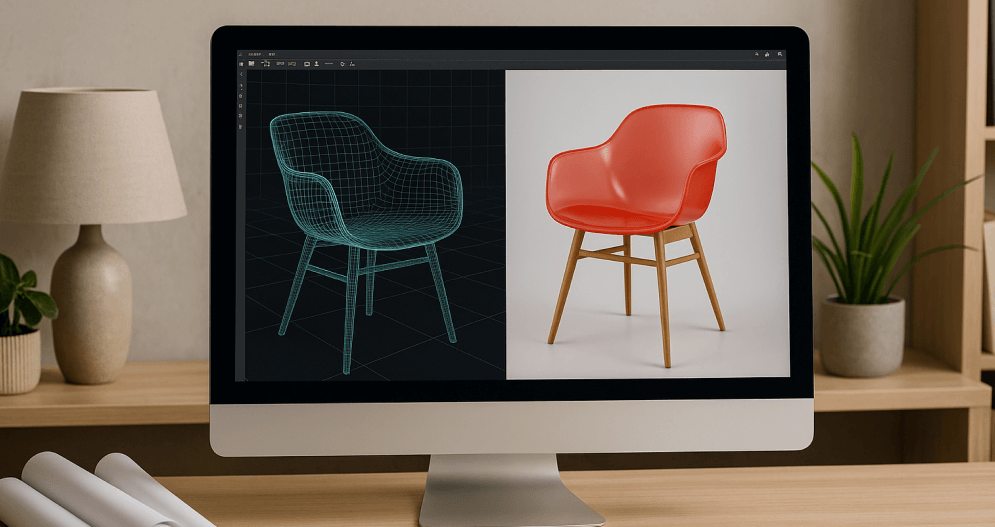A new era for furniture and interior design
When one of the world’s most iconic furniture brands openly embraces AI-powered furniture design, it’s a clear sign that the industry is at a turning point. For decades, premium furniture houses have relied on human creativity, craftsmanship, and meticulous design processes. Now, artificial intelligence is becoming an integral part of that workflow, not to replace the designer’s vision, but to enhance it.
The move is particularly exciting for interior designers and architects, who now have access to AI tools that can help them experiment with furniture placement, explore style preferences, and test color schemes long before a single prototype is built. Platforms like RealityMAX make this process even more accessible, allowing professionals to transform 2D images into detailed 3D models or reimagine existing scenes with AI, speeding up experimentation without compromising creative control. This evolution is not about handing over the reins to machines, but about expanding the boundaries of what’s possible in the interior design process.
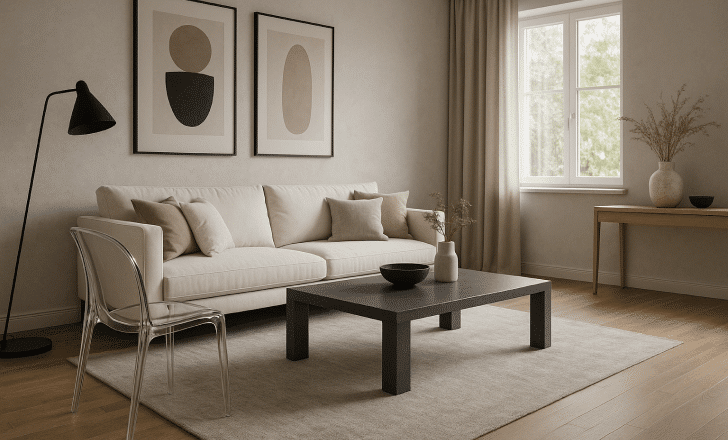
AI as a creative partner, not a competitor
In the past, discussions about AI in creative industries often centered on fears of automation replacing human ingenuity. But as interior design software and AI algorithms mature, a new narrative is taking shape—AI as a user-friendly interface for accelerating inspiration and solving design challenges.
For a brand to integrate AI into furniture design is to acknowledge that technology can process vast datasets, spot emerging trends, and generate design ideas that spark fresh thinking. In the same way that CAD revolutionized technical drawing, AI interior design tools are becoming a natural extension of the creative toolkit.
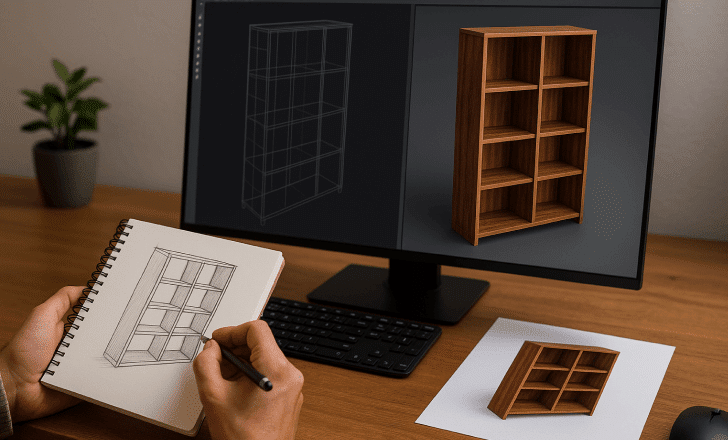
Spotlight on Kartell: Lorenza Luti champions AI without sacrificing creativity
A striking example of a prestigious brand embracing AI‑powered furniture design comes from none other than Kartell, the famed Italian design house celebrated for its bold use of plastic and collaborations with design icons. In a recent statement, Lorenza Luti, Kartell’s CEO (and third-generation leader), emphasized that the company uses artificial intelligence “to create furniture without replacing the creativity of the designer” — a move that signals AI as a supportive, not substitutive, force.
Lorenza, daughter of Claudio Luti and granddaughter of founders Giulio Castelli and architect Anna Castelli Ferrieri, fully embodies Kartell’s lineage of design innovation. Her heritage traces back to iconic pieces like the Componibili (1967/68), a modular, colorful furniture system conceived by her grandmother. These pioneering designs, which remain beloved today, underscore Kartell’s long-standing commitment to blending aesthetics with functionality.
Under Lorenza’s direction, Kartell has also elevated its creative ethos through partnerships with celebrated figures across design and fashion: Philippe Starck, Patricia Urquiola, Christian Lacroix, Lenny Kravitz, and textile legends like Missoni.
These collaborations reinforce the idea that while tools like AI may assist in the design process, it’s the human creativity and rich brand history that remain at its heart.
Furthermore, Kartell’s corporate philosophy explicitly frames AI as a companion to “human intelligence,” enabling smarter, more efficient design, from optimizing material use to exploring forms, without undermining the emotional and creative essence of design.
By openly integrating AI into its design workflow, yet maintaining the emphasis on human artistry and heritage, Kartell sets a compelling precedent. It exemplifies how even storied designers, rooted in tradition and craftsmanship, can confidently step into the future of AI-powered furniture design, blending technology, innovation, and creativity in perfect harmony.
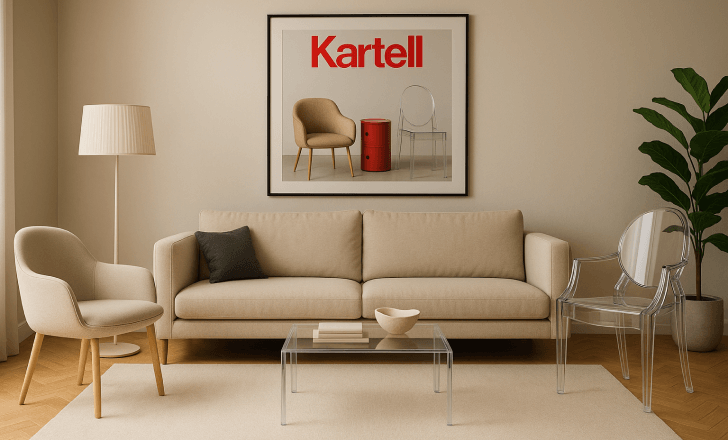
Why the industry is paying attention
AI integration in high-end furniture is significant for several reasons:
- Time savings: AI can generate multiple variations of a room layout, textures, or materials in seconds, allowing professionals to iterate quickly.
- Informed decisions: With predictive analytics, AI can help select color schemes, dimensions, and styles that resonate with a target audience.
- Customization at scale: AI tools can adapt design ideas to different spaces, creating personalized solutions for clients without inflating costs.
When leading brands make these AI-powered features part of their design process, it signals to the market that the technology is mature, reliable, and worth the investment.
From mood board to virtual staging
One of the most powerful applications of AI in interior design is virtual staging. Traditionally, furnishing an empty room for a photo shoot required logistics, transport, and a dedicated team. Today, AI can virtually stage a space in minutes, adjusting furniture placement and style until the vision feels just right.
Paired with augmented reality, these tools let clients step into their future bedroom or living space, walking around the design before a single piece is manufactured. It’s a shift that blends fun, inspiration, and practicality, while helping both brands and consumers make better, faster decisions.
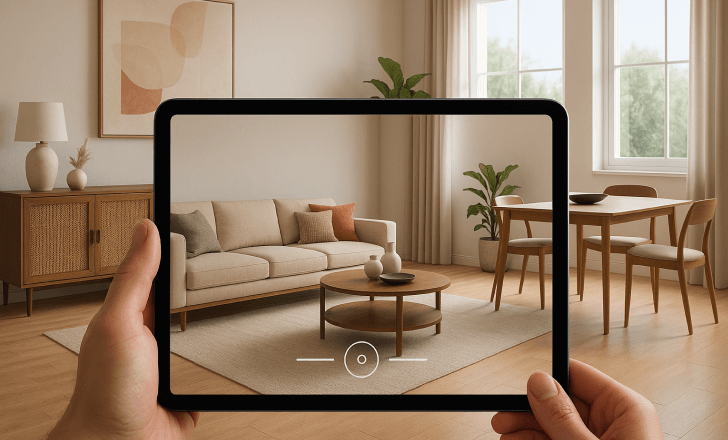
How AI enhances the human touch
There’s a misconception that AI-driven design removes the human element from creative work. In reality, AI algorithms are only as effective as the designers who guide them.
The technology responds to data, but it’s the designer’s creativity, vision, and deep understanding of human behavior that shape the final result. AI can suggest combinations of materials and textures, but it can’t replace the emotional resonance that a skilled professional brings to a project.
In practice, this partnership between human and machine means interior designers can focus more on storytelling and client relationships, while AI handles repetitive or time-consuming tasks.
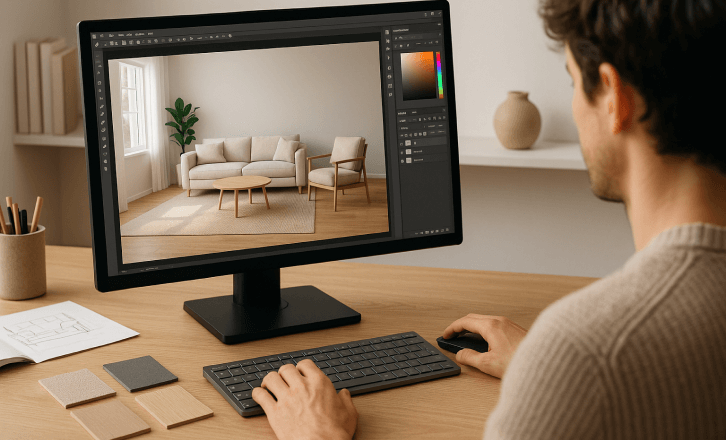
Democratizing premium design tools
High-profile adoption also has a ripple effect on accessibility. When brands use AI for product visualization and prototyping, the same features often become available to smaller studios, freelancers, and even design enthusiasts.
RealityMAX, for example, brings AI-powered furniture design closer to everyone through two key capabilities. With Image to 3D, you can transform a 2D image, whether it’s a photo, sketch, or render, into a real 3D model ready to place in a scene. With ReIMAGINE, you can enhance or re-style any 3D scene through AI prompts, adjusting lighting, textures, and even the atmosphere to match your vision. These tools let designers at all levels imagine, redesign, and enhance projects without heavy investment in physical prototypes.
Connecting vision to reality
The journey from concept to finished furniture piece is filled with decision points, some aesthetic, some technical, and many budget-related. AI helps bridge the gap between inspiration and execution by:
- Generating realistic images of potential designs.
- Testing how different styles fit in specific spaces.
- Simulating furniture placement to optimize dimensions and flow.
By combining these steps with augmented reality, clients can stand inside their future rooms, seeing the detail and textures of each element in context. This connection between vision and reality reduces uncertainty and builds confidence.
A creative ecosystem for professionals and clients
The beauty of AI in furniture design is that it serves both ends of the value chain. For professionals, it’s about saving time, refining ideas, and delivering more accurate proposals. For clients, it’s about feeling more involved, informed, and excited about the process.
This collaborative approach transforms the interior design process from a series of presentations into an interactive, evolving conversation. By the time a project reaches production, both designer and client have already walked through multiple versions of the space, tested different styles, and made informed decisions together.

Inspiration meets innovation
What’s particularly exciting about seeing a global brand embrace AI is the cultural shift it represents. This is not just about adopting new technologies, it’s about recognizing that creativity thrives when it has more tools at its disposal.
From exploring possibilities for furniture placement to experimenting with themes, AI gives designers the freedom to push boundaries without losing sight of their core style and brand identity. It opens doors to solutions that might never have emerged through traditional methods alone.
The future of AI-powered furniture design
The momentum is building. As more brands follow suit, AI-powered furniture design will become a standard expectation rather than a novelty. Interior designers will lean on AI not because it’s trendy, but because it’s effective, reliable, and integral to a modern design process.
Whether it’s virtually staging empty rooms, creating hyper-realistic images, or generating design ideas tailored to client preferences, AI is proving it can enhance creativity, streamline workflows, and deliver remarkable results.
In the end, this evolution isn’t about machines replacing human vision, it’s about giving that vision the technology it needs to stand taller, move faster, and connect more deeply with the spaces we call home.
